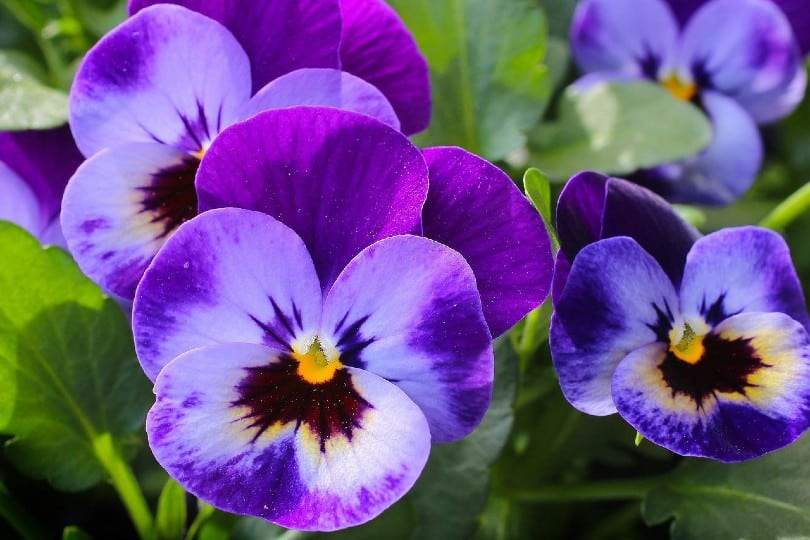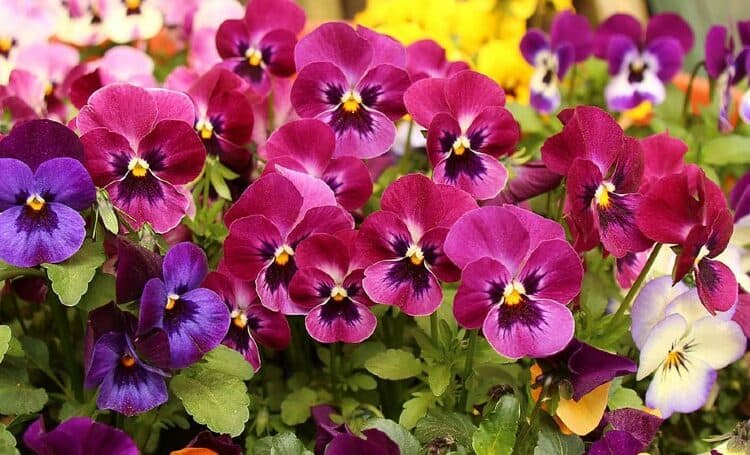We’ve all heard the phrase curiosity killed the cat. Cats will chew on plants or vines or anything out of the ordinary that displaces their routines or catches their eye. Cats love to run, jump and explore, and it can be difficult to keep plants out of your curious kitty’s reach. Pansies are colorful, cheerful flowers that can fill any space or garden with small splashes of joy. They are often prized by gardeners and homeowners alike for their bright colors and delicate appearance, and the chances are your feline friend may find them appealing as well.
Pansies come in several colors, and the gorgeous flowers can draw anyone in—even your notoriously picky eater of a cat. Whether the pansies are used as a beautiful border around your home or adding splashes of color on your patio, they’ll liven up your landscape and even enhance the appearance of your baked goods. Pansies are often used for decorations on dishes, especially wedding cakes. They are edible for humans, and you don’t have to worry if your cat managed to snag a colorful blossom. The ASPCA lists Pansies as nontoxic.
What Happens if My Cat Eats Pansies?
While the ASPCA does not consider a pansy to be toxic to your cat (or dog), eating anything outside of their regular diet can lead to illness or other uncomfortable side effects for your furry friend. Just because we can eat soap or toothpaste doesn’t mean we should. Your cat is much the same— they will be perfectly fine if they eat a pansy because they are not poisonous. However, that doesn’t mean your cat is going to enjoy the experience.
Pansies are not toxic for cats, but they can experience upset stomachs if they eat too many of the beautiful buds.

A Cat’s Diet
A cat’s diet isshould include around 50 % – 60 % meat protein. Cats are carnivores, and their ancestors consumed mostly protein to survive in the wild. Cats need meat and a healthy balance of fats, carbohydrates, vitamins, minerals, fatty acids, and amino acids (found in meat protein).
Your cat, unlike humans, cannot digest plant-based material properly. Their bodies are not suited for vegetarian meals, and they will not physically survive on a vegetarian or vegan diet.
My Cat Ate a Pansy, Now What?
Some cats may experience severe stomach upsets after eating pansies. Your cat may have vomiting and diarrhea after eating too many panises. If your cat has environmental allergies, they might experience inflammation or blistering of their skin, particularly the areas around their mouth.
If your cat has ingested a pansy, or any other plant parts, you should contact your veterinarian if your cat shows any indications of an adverse reaction. If you are uncertain as to whether or not your cat actually ingested a plant, but you notice the above behaviors like vomiting or blistering in their skin, contact your vet and follow any instructions without delay.
Final Thoughts
While Pansies are not poisonous to your cat if ingested, we don’t recommend letting your cat consume the flower as a snack. They might not be toxic, but pansy flowers can cause some discomfort for your furry feline. Your best bet is to ensure your cat does not have the opportunity to eat the colorful buds. If you want to treat your cat, aim for vet-approved cat treats or plants like catnip or cat grass.
Featured Image Credit: Pixabay














